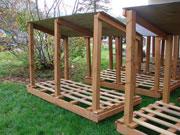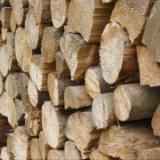Burn Wise Best Burn Practices
Properly installed, correctly used wood-burning appliances should be smoke free. If you see or smell smoke, you may have a problem. Reduce smoke inside and outside your home using the steps below:
Building a Fire Safe Practices Money-saving Tips
An efficient fire requires good firewood, using the right wood in the right amount, and good fire building technique. Get the best efficiency from your wood stove or fireplace using the following steps.
- Season wood for at least 6 months.
- Wood burns best at a moisture content of less than 20 percent. Test wood with a wood moisture meter before you burn it.
- Store wood outdoors, off the ground, with the top covered.
- Start fires with newspaper, dry kindling, or all natural fire starters, or install a natural gas or propane log lighter in your open fireplace.
- Buy and burn locally cut firewood to decrease the risk of transporting invasive forest pests to your property. Learn more from the Don’t Move Firewood campaign.
When using your wood burning appliance, follow these guidelines for safe operation:
- Keep flammable items, like curtains, furniture, newspapers, and books, away from your appliance.
- Only use newspaper, dry kindling and all-natural or organic fire starters. Never start a fire with gasoline, kerosene, or charcoal starter.
- Do not burn wet or green (unseasoned) wood.
- Many wax and sawdust logs are made for open hearth fireplaces only. Check your wood stove or fireplace insert operating instructions before using artificial logs.
- If you use manufactured logs, choose those made from 100 percent compressed sawdust.
- Build hot fires. For most appliances, a smoldering fire is not safe or efficient.
- Keep the doors of your wood-burning appliance closed unless loading or stoking the live fire. Harmful chemicals, like carbon monoxide, can be released into your home.
- Regularly remove ashes into a covered, metal container. Store the container outdoors on a nonflammable surface.
- Keep a fire extinguisher handy.
- Check your local air quality forecast before you burn.
What Not to Burn
These can materials release toxic or harmful chemicals when burned, and may damage your appliance:
- Household trash, including cardboard, plastics, foam and the colored ink on magazines, boxes, and wrappers
- Coated, painted, and pressure-treated wood
- Ocean driftwood, plywood, particle board, or any wood with glue on or in it
- Wet, rotted, diseased, or moldy wood
- Plastic, asbestos, rubber, manure and animal remains
Improve the insulation in your home to reduce overall heating needs and heating bills. Caulk around windows, doors, and pipes to seal air gaps and add weather-stripping to doors and windows. Check out EPA's ENERGY STAR Home Improvement for additional tips.
Find local tree cutters who will deliver wood to your home. They save on landfill dumping fees, reducing landfill use, and you may end up with discounted firewood.


